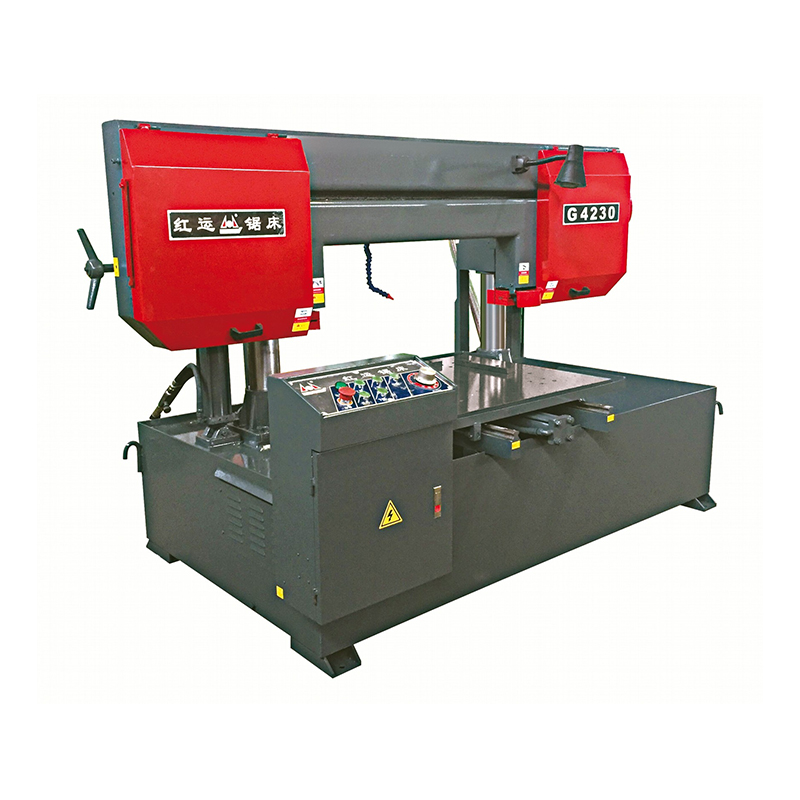Manufacturers Expand Use Of Double Column Horizontal Metal Band Saw In Heavy-Duty Applications
Manufacturers have increasingly incorporated the Double Column Horizontal Metal Band Saw into their heavy-duty cutting processes. This type of saw has become an important tool in industrial settings where precision and durability are required for cutting large metal workpieces. The robustness and stability offered by the double column design enable consistent performance even under demanding workloads, making it a reliable choice for many fabrication shops and manufacturing plants.

One key factor contributing to the growing use of the Double Column Horizontal Metal Band Saw is its ability to handle heavy materials with small deformation. Unlike lighter saws, the double column structure provides advanced rigidity, reducing vibrations and improving cutting accuracy. This capability is especially valuable in applications involving thick steel plates, large pipes, or solid metal blocks. By maintaining alignment and steady feed rates, the saw supports efficient material processing without sacrificing quality.
Alongside the adoption of double column machines, the rise of the automatic horizontal bandsaw has also influenced production workflows. Automation features such as programmable cutting sequences, automatic material feeding, and hydraulic clamping reduce manual intervention. These advancements allow operators to maintain consistent throughput while focusing on other tasks. The integration of automatic controls complements the mechanical advantages of the double column design, making the combination well-suited for high-volume and repetitive cutting operations.
In many heavy-duty applications, safety is a crucial concern. The Double Column Horizontal Metal Band Saw often includes protective guards and emergency stop mechanisms to safeguard operators. With automation, the automatic horizontal bandsaw further less the risk of human error during cutting. Automated cycles ensure that material is securely clamped and cut precisely according to preset parameters, reducing the likelihood of accidents. This focus on operator safety aligns with industrial standards and promotes a secure working environment.
Cost efficiency is another reason manufacturers are expanding the use of these saws. The longevity of the Double Column Horizontal Metal Band Saw reduces downtime caused by maintenance or repairs. Its design distributes cutting forces evenly, decreasing wear on the blade and machine components. Meanwhile, the automatic horizontal bandsaw enhances productivity by less idle time between cuts. Together, they help lower operational costs and improve overall output without compromising cutting quality.
Furthermore, versatility plays a role in the popularity of the Double Column Horizontal Metal Band Saw. This saw accommodates a wide range of cutting angles and materials, which benefits manufacturers working with diverse product lines. The ability to quickly adjust cutting parameters and switch between manual and automatic modes adds flexibility to production schedules. Similarly, the automatic horizontal bandsaw can be tailored to various cutting needs, supporting different blade types and speeds as required by the job.
The expanding use of the Double Column Horizontal Metal Band Saw reflects ongoing developments in manufacturing technology. As industries demand more reliable and efficient metal cutting solutions, these saws have proven effective in meeting those needs. The combination of mechanical strength, precision, automation, and safety features ensures they remain valuable assets in heavy-duty applications.
The increased adoption of the Double Column Horizontal Metal Band Saw alongside automatic horizontal bandsaw technologies marks a significant trend in industrial metal cutting. These tools help manufacturers enhance cutting accuracy, improve safety, and optimize production efficiency. Their continued use and development are likely to support evolving manufacturing requirements across various sectors.

 English
English 中文简体
中文简体 русский
русский

